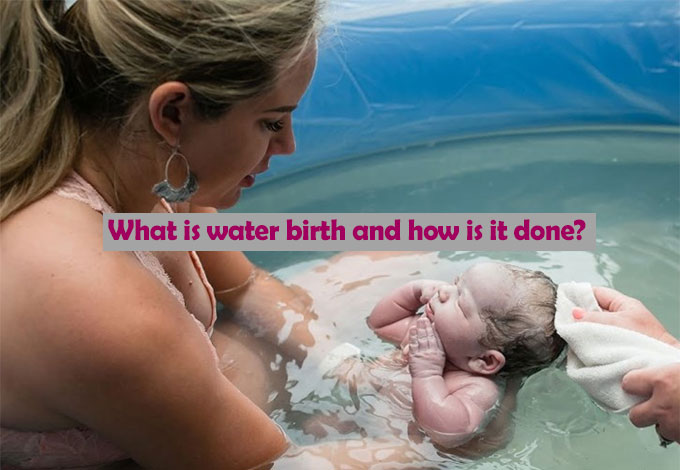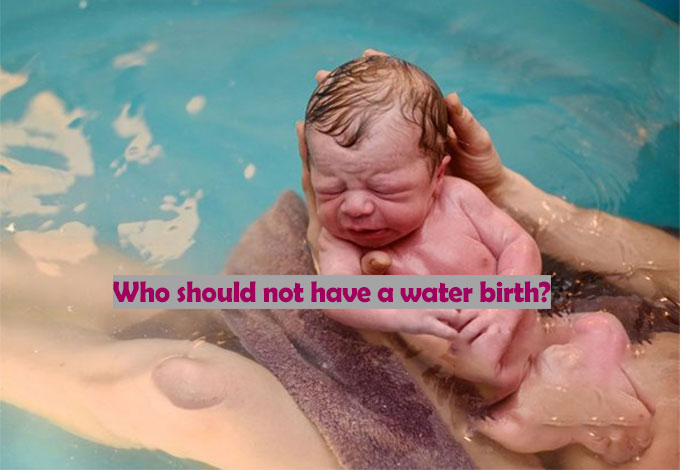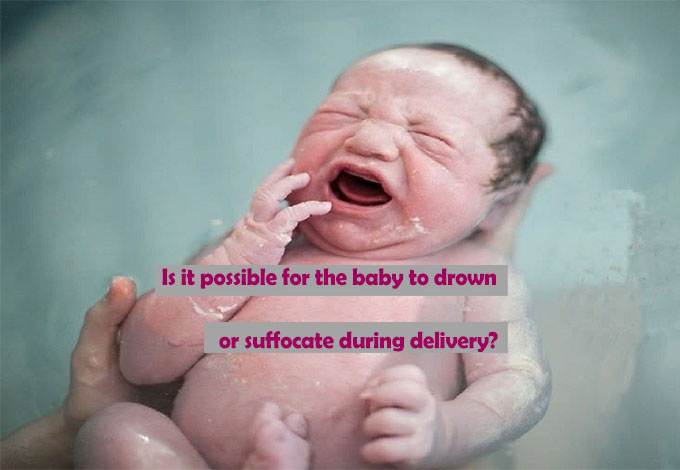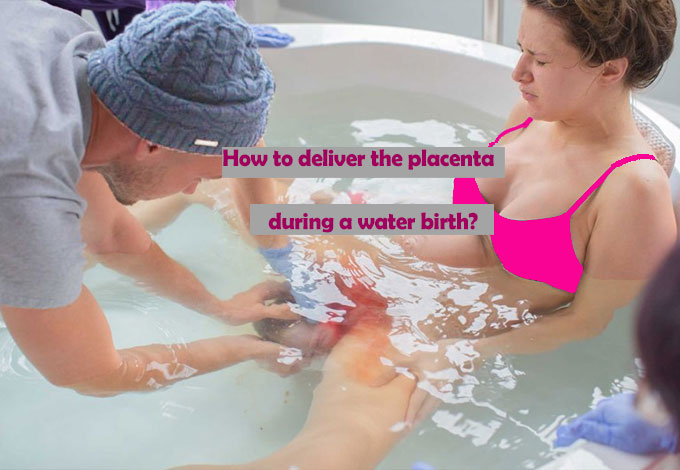What is water birth and how is it done?

Have you ever heard of water birth? Do you think choosing this delivery method is the right choice? Join us as we share information about the pros and cons of water birth, what to wear, and options for pain relief before and after.
What is water birth?
The process of natural birth in water using deep bathtubs or birthing pools is called water birth. Much research has shown that water birth is not only harmless and painless but also helps relieve labor pain.
Also, during childbirth, the mother has more peace and comfort than in an environment without water. Water can help a person support their weight, make movement easier, and feel more in control during labor.
Who can experience water birth?
If you have had a low-risk pregnancy and your midwife or obstetrician believes it is safe for you and your baby to do so, water birth may be a good option for you.
But in general, it is better to discuss this issue in detail with a doctor or midwife before the last days of pregnancy and consider all aspects and, having made a decision, start planning.
Related posts: drink during pregnancy
Who should not have a water birth?
- The position of the fetus is breech (the head of the fetus looks up at the mother’s abdomen).
- The mother is pregnant with twins or triplets (or more)
- The fetus is premature. It means being born less than 37 weeks
- The fetus passed meconium before or during delivery.
- The mother has herpes or active herpes.
- The mother has preeclampsia during pregnancy.
- The mother has an infection.
- The mother has a fever and high body temperature during delivery and in the last days of pregnancy.
- The mother is bleeding.
- More than 24 hours have passed since the mother’s amniotic sac ruptured.
- The mother has already had a cesarean section in her previous delivery.
- The mother is at risk of having problems during childbirth.
If she has any of the risk factors listed above, the mother will probably be advised not to give birth in water. Because you may find yourself in an emergency situation and your or your child’s health may be in danger.

For example, if a mother has an infection, she may be at risk of passing that infection to her baby in the aquatic environment. If the mother is at risk of bleeding, being in a swimming pool can be dangerous because it is difficult to measure the amount of blood lost in the water. Therefore, if any of the above conditions apply to you, it is better to consult a gynecologist.
What are the benefits of water birth?
Warm water can help relax, reduce pain, and comfort a woman. The comfort and support in the water allow you to try different birthing positions in the water and move more freely.
When you are standing in the water, gravity helps move the baby down toward the birth canal. Being in water can lower a woman’s blood pressure and relieve anxiety to a great extent. It also allows the female body to release endorphins, which play a very effective role in reducing pain.
Water can help relieve back pain and pressure during labor. If the legs are spread wide enough during a water birth, this effect will double. Labor and delivery in a pool or delivery pool can be a “welcoming” experience and make a woman feel more secure.
As the baby’s head exits the birth canal, the water can help stretch the perineum, reducing the risk of injury.
Does water birth have any disadvantages?
- One of the disadvantages of the birthing pool is that the use of painkillers is not allowed. Water birth candidates should not use opioids for at least 6 hours before entering the birthing pool.
- The mother’s contractions in the water may be slow or weak, especially if she enters the pool too early.
- If the pool water is too cold during delivery, the baby is at risk of hypothermia. But the doctor often checks the temperature of the water regularly. If your baby’s body temperature is low, skin-to-skin contact and warm towels will help.
- In case of complications, it may be necessary for the mother to leave the pool and complete the bed birth.
Is it possible for the baby to drown or suffocate during delivery?
Many women are surprised and ask if there is a risk of drowning the baby if they give birth in water. We have to say yes! But the likelihood of that happening is very, very low.
Babies do not need to breathe when in the womb. Because they get oxygen from the blood that comes from the mother through the placenta. When born in water, their bodies behave as if they were still in the womb until they take their first breath. This is when your lungs open.

This means that when the baby enters normal amniotic fluid water, his lungs are not open and the water cannot enter them.
After the baby is born in the water, the mother and the doctor slowly bring it to the surface. The baby will only be underwater for a short time and will not breathe until out of the water. So do not worry.
Your child may only be exposed to the following risks:
- If their heads are brought above the water and they go down and back into the water.
- If your oxygen supply is affected by the placenta.
- If your body temperature suddenly changes.
But it should be noted that your doctor will be very careful that things like these do not happen.
Where can I give birth in water?
- At home, in a rented birthing pool, of course, with the presence of a doctor
- In-equipped birthing centers
- Hospitals equipped with a water supply system
- Private offices
What should I wear for water birth?
You can wear whatever clothes you feel comfortable in. Keep in mind that you will be in a large bathroom. For this reason, many women prefer to wear a bikini or swimsuit.
Some choose to wear just a bra. If you want to be a little more elegant, you can also wear a shirt or a vest. This way, if the delivery time is too long, you can wrap the bottom of the dress and tuck it into the neck.
Some women prefer to be completely naked. In fact, anything that makes your upper body comfortable is fine. But it’s best to leave the bottom half fully exposed so your doctor can see what happens as the time of delivery approaches. However, if you want to keep the pants up to that point, that’s fine.
How is the pain relief during a water birth?
Water is sometimes referred to as nature’s epidural or aqua-dural because of its support and pressure relief. However, if you need even more additional relief, you can also use oxygen gas and air in the birthing bath. Antonox tubing is waterproof, so it can also be used in a swimming pool.
Can the umbilical cord clamp option be used in a water birth?
Delayed cable clamping (DCC) is routine. Most birthing centers and maternity hospitals, hospital labor departments, and home birth teams attempt to perform DDC for every birth.
This is done because preventing the umbilical cord from being cut until the blood from the placenta to the baby’s body stops, can increase the flow of iron and stem cells into the baby’s body. So ultimately it helps their growth and their immune system.
While many centers perform DCC as a routine, if you choose the water birth option, you should speak to the birthing team in advance. If your newborn is breathing or bleeding more than normal, your doctor may decide to cut the umbilical cord earlier than usual.
The safety of the mother and her baby during and after a water birth is very important and is always a priority for the birth team.
How to deliver the placenta during a water birth?
Your doctor will likely ask you to get out of the pool to deliver the placenta. Because gravity can be very helpful in the third stage of labor. It is also easier to help you get out of the water in an emergency. Because some mothers may feel weak after delivery or in the third stage of labor.

If you suddenly feel dizzy, it will be difficult to get out of the pool quickly and safely. Most hospitals and birthing centers have their own routine of how to deliver the placenta, and most of them can remove it in bed, toilet, etc. for the safety of the mother. Therefore, it is better to consult your doctor about this process.
Natural childbirth
Is it possible to help the placenta pass quickly by injecting blood pressure medications?
To speed up the delivery of the placenta into the pool, you can inject the hormone oxytocin or pressure. To do this, the mother’s thigh should be slightly removed from the water to give the injection. After that, a few minutes after the injection, you need to leave the pool for the placenta to come out.
When might I need to get out of the pool?
- If the midwife sees the meconium. (when the baby is not yet born and poops)
- If the mother starts bleeding profusely from the vagina.
- The mother’s labor becomes abnormal, for example, there is a change in temperature or blood pressure.
- If your child’s heart rate changes.
- Need to go to the toilet.
- If your labor is slow or your abdominal contractions are weak.
- To deliver the pair
Can I change my mind about waterbirth?
Even if your birth plan says so if you decide you don’t want to enter the birthing pool, you don’t have to. In fact, if you get into the birthing pool and don’t like it, you can get out again.
Don’t worry about changing your mind. Your doctor will support you and your decisions as long as you and your baby are healthy.
What happens during a water birth?
How long can a baby stay in water birth?
How does the baby not drown in a water birth?
Is giving birth underwater less painful?
Conclusion
Water birth is a method of childbirth in which the mother is immersed in a pool of warm water during labor and delivery. This approach to giving birth has gained popularity in recent years due to its potential benefits, such as pain relief and relaxation for the mother, and a more gentle entry into the world for the baby.
During water birth, the mother is usually accompanied by a midwife or obstetrician, who monitors the mother’s vital signs and the progress of the baby’s birth. The pool is often equipped with tools such as underwater cameras and mirrors to allow the midwife or obstetrician to monitor the baby’s delivery.
Water birth is generally considered safe for women with uncomplicated pregnancies, although it is important to note that it is not suitable for all women. Women with certain medical conditions, such as high blood pressure or infections, or those who are at high risk for complications during delivery, may not be good candidates for water birth.
In conclusion, water birth is a unique approach to childbirth that offers potential benefits for both mother and baby. However, it is important to discuss this option with a healthcare provider to determine if it is safe and appropriate for the individual woman and her baby.
